

 Bergman Estate. The property for Bergman Estate was acquired by Alan and Pam Bergman in 2013; they eventually acquired a neighboring parcel for a total of 40 acres. Ten acres are currently planted including 8 acres to red varieties: 68% Cabernet Sauvignon, 24% Cabernet Franc, 5% Petit Verdot and 3% Merlot. Two terraced acres on a triangular hill are planted to a Montrachet clone of Chardonnay. The vines range in elevation from 500 to 700 feet.
Bergman Estate. The property for Bergman Estate was acquired by Alan and Pam Bergman in 2013; they eventually acquired a neighboring parcel for a total of 40 acres. Ten acres are currently planted including 8 acres to red varieties: 68% Cabernet Sauvignon, 24% Cabernet Franc, 5% Petit Verdot and 3% Merlot. Two terraced acres on a triangular hill are planted to a Montrachet clone of Chardonnay. The vines range in elevation from 500 to 700 feet.
What is now Bergman Estate was originally part of Florentine Kellogg’s 600 acre property. Kellogg and his family crossed the country by wagon train in 1846 and settled in Napa Valley in October of that same year. Several other prominent wagon trains came west that year with members becoming early influential citizens of Napa Valley including the Donner Party and the Grigsby-Ide Party.
Kellogg planted some of the valley’s first vines in 1848 (2 acres of Mission grapes) and was the first wine grower in Napa Valley to ship his grapes to merchants in San Francisco. Records show he also grew English walnuts, peaches and apples. Wildlife was plentiful in those years including deer, elk and Grizzly Bear which he hunted on his property. And he maintained his own machine shop. After the news of the Gold Rush, he went to the gold fields and hit a moderate strike.
Kellogg was the engineer of the nearby Bale Mill, founded in 1846. He was in part gifted 600 acres in exchange for his iron work on the mill by Dr. Edward Turner Bale. The Bale Grist Mill still works with milling demonstrations taking place every weekend. A water shed used to supply additional water to the mill via a flume when the creek was low is still standing, located a short distance from the mill. And according to Barbara Neelands in her short book Reason P. Tucker: The Quiet Pioneer published in 1989, the first school built for children in the region was a shanty located in front of the Bale Mill prior to the Tucker School being built on Larkmead Lane in 1849.
Kellogg was Napa County’s first coroner and according to an in depth article dated December 22, 1890 in the Napa County Reporter highlighting some of Napa Valley’s early history in the 1840s and 1850s, Kellogg was one of its first three county supervisors. Their first meeting was December 6, 1856.
He was not the only early Napa Valley pioneer to later in life move to Goleta, Santa Barbara County. One of his prominent up valley neighbors and friends, Reason P Tucker left Napa Valley in 1872 and also moved to Goleta after a several month stay in San Francisco. This was following a lawsuit which took away all his property ultimately decided by the California Supreme Court involving a claim questioning rightful ownership of land dating back to the Bale land grant.
Kellogg and Tucker died within a year of each other in the late 1880s and both are buried within 100 feet of each other at the Goleta cemetery located directly next to the 101 freeway. Both gravesites are a short walk from the tiny parking lot; two inscriptions on the marble grave marker are noteworthy – mention of his Donner Party rescue “one of the rescuers of the Donner Party” and one referring to his character, “a candid, honest and worthy man.”
Kellogg Avenue + Jonny Wallis Park, Goleta
Florentine Kellogg grave, Goleta Cemetery
Kellogg and Tucker share several other similarities having both migrated west in 1846 on separate wagon trains and both just barely escaped the early winter snow that year that trapped the Donner Party. They settled near each other in the northern part of Napa Valley. Both men left Napa Valley to look for gold in 1848. And their families joined when one of Kellogg’s children, Angeline married one of Tucker’s boys, George (Geo). Angeline and George’s original home built in the late 1850s serves as the visitor center for Bothe State Park, just south of the town of Calistoga.
Kellogg Avenue in Goleta is named in his honor; his house used to be located on what is now Jonny Wallis Park (also located on Kellogg Avenue). He also built the first church (Methodist) in Goleta. In 1907, Florentine’s son Frank Kellogg wrote a short memoir about his parents and their lives in Napa Valley and in Goleta.
—
Vines were originally planted on a north facing part of the property in the 1890s; county records show it was planted to varieties such as Burger and Riesling. Today nothing remains of the old vines although the Bergman’s have discovered old redwood stakes where they were planted. And that particular vineyard has long been overtaken by the forest. Another part of the property referred to the meadow, is now forested but used to be planted to vines in the 1940s.

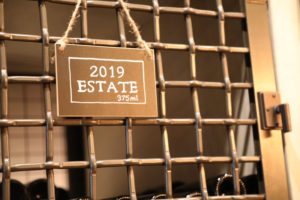
 Carl Heinemann, a Point Richmond junior high school administrator, along with his wife Inge (a German immigrant) and four young children moved to this property in the late 1960s. Several of their children later became involved in the wine industry. In 1969, with the help of Joseph Phelp’s founding winemaker Walter Schug, they developed 10 acres of vines including Pinot Noir. Joseph Phelp’s first vintage was in 1974; because their estate property had only been planted to vines in 1973 they did not yet have grapes from their own property. As a result, the first harvest of Joseph Phelps included Pinot Noir from what was called the Heinemann Mountain Vineyard and subsequent harvests also included grapes from this site. For reference, Stanton Vineyard also provided grapes for Phelps first harvest. And when Walter Schug left Joseph Phelps and founded Schug Winery, with production in the early years at Storybook Winery north of Calistoga, and later their current home on the Sonoma side of Carneros, he kept producing Pinot Noir from the Heinemann Mountain vineyard. Grapes from the property were later sold to Cakebread Cellars.
Carl Heinemann, a Point Richmond junior high school administrator, along with his wife Inge (a German immigrant) and four young children moved to this property in the late 1960s. Several of their children later became involved in the wine industry. In 1969, with the help of Joseph Phelp’s founding winemaker Walter Schug, they developed 10 acres of vines including Pinot Noir. Joseph Phelp’s first vintage was in 1974; because their estate property had only been planted to vines in 1973 they did not yet have grapes from their own property. As a result, the first harvest of Joseph Phelps included Pinot Noir from what was called the Heinemann Mountain Vineyard and subsequent harvests also included grapes from this site. For reference, Stanton Vineyard also provided grapes for Phelps first harvest. And when Walter Schug left Joseph Phelps and founded Schug Winery, with production in the early years at Storybook Winery north of Calistoga, and later their current home on the Sonoma side of Carneros, he kept producing Pinot Noir from the Heinemann Mountain vineyard. Grapes from the property were later sold to Cakebread Cellars.
The property had several different owners since the Heinemann’s including the Westgates. Joan Westgate was a master gardener and grew numerous varieties of roses in the impressive still existing garden on a hill below the house. According to an article in the May 9, 1995 issue of the Napa Valley Register, she sold her roses at the Napa Valley Farmer’s Market under the name, The Rose Petaler. And she wrote an informative article about pruning roses in the December 22, 2001 issues of The Napa Valley Register.
The majority of the property is surrounded by the forested lands of Bothe State Park. The Glass Fire burned through part of their property in 2020, remarkably sparing their home and also did not burn through most of the immediate surrounding state park lands. The final hot spots were extinguished up to 45 days after the fire started. With resulting smoke taint an issue for all vineyards in Napa Valley during 2020, local labs were overwhelmed with wine samples. Due to the backlog of local labs, some wineries even sent their samples to Australian based labs for results. Conveniently, Alan and Pam’s son Brett was at Cornell studying viticulture and enology. Through the easy to use DART (Direct Analysis in Real Time) Mass Spectrometer he was able to provide results within a few seconds rather than the 20+ minutes needed by other machines. He was also one of only two winery employees for the first harvest at Bergman Estate.
In order to keep underbrush clear on parts of the property, goats and sheep are brought in to graze.
Pam left her position as Chairman, Board of Directors for the nonprofit P.S. ARTS in Los Angeles and since 2013 has overseen numerous improvements to the property. Prior to acquiring the property viticulturist David Abreu told them that if they didn’t purchase the site, he would. Abreu oversaw the replanting of the vineyard; existing vines were removed in 2014, rootstock was planted in 2015, grafted to the varieties in 2016 and their first tiny harvest was in 2018. The vineyard was certified CCOF in 2016 which due to requirements of needing to certify within 30 feet surrounding the vineyard, part of their garden is also CCOF. Pam calls their slice of Spring Mountain a ‘suspended nest’ located above the valley floor but below the upper parts of Spring Mountain. Its natural bowl shape resembles an amphitheater; if Napa Valley had ever created an outdoor concert venue using the natural contours of the land, this site would have been ideal.
There are not many properties in Napa Valley which have no immediate vineyard neighbors. The property is both an oasis but also a spiritual place of being. And part of this feel is from its isolation. There is an immediate connection to the land but also a connection to some of the early pioneers who settled this part of Napa Valley.
Great things are happening here on the wine growing and winemaking side of the operations. But its been a quiet project, an under the radar combination of curiosity, collaboration, passion, obsession and precision with the intent of letting the wines do the final talking.


 And unique for a Mayacamas mountain vineyard is their exposure; the majority of their vineyard faces west. And unlike the valley floor on hot days their vineyard is generally up to 10 degrees cooler. Managing the vineyard has been a learning curve especially with the high sustained temperatures around Labor Day weekend in 2022. Misters are installed throughout the vineyard to provide a cooling influence when needed during periods of ongoing high temperatures and shade clothes are used as needed. The misters are manually activated when temperatures start approaching 100 degrees and spray out very fine droplets, keeping the canopy cooler but evaporating before they reach the soil. Parts of the vineyard are netted to keep away birds and also a resident bear. We have seen a variety of methods being used to discourage birds from eating grapes including shiny mylar tape, speakers playing hawk calls, flying fake birds of predators but this vineyard was the first we saw a device emitting a laser over the vines.
And unique for a Mayacamas mountain vineyard is their exposure; the majority of their vineyard faces west. And unlike the valley floor on hot days their vineyard is generally up to 10 degrees cooler. Managing the vineyard has been a learning curve especially with the high sustained temperatures around Labor Day weekend in 2022. Misters are installed throughout the vineyard to provide a cooling influence when needed during periods of ongoing high temperatures and shade clothes are used as needed. The misters are manually activated when temperatures start approaching 100 degrees and spray out very fine droplets, keeping the canopy cooler but evaporating before they reach the soil. Parts of the vineyard are netted to keep away birds and also a resident bear. We have seen a variety of methods being used to discourage birds from eating grapes including shiny mylar tape, speakers playing hawk calls, flying fake birds of predators but this vineyard was the first we saw a device emitting a laser over the vines.
Pam refers to their vineyard management as ‘bespoke farming’, needing to continually fine-tune their vineyard. Their Chardonnay is planted on bench terraces on a steep hill with three rows per terrace. However the third row in each terrace was partially blocking sun from the other two rows and competing for water. The decision was made to remove the third row from every terrace in spring 2024. Remarkably their overall production increased with the 2024 harvest.
Pam calls their Cabernet Franc feisty, acting like its growing at a higher elevation. On their property this variety tends to be very tannic. They are experimenting with cover crops, less leaf thinning and more precise irrigation. And during picks, they are extremely selective in what is harvested. For example end row vines are often kept seperate from other picks and then harvested later. And these are isolated in the cellar during fermentation and aging.
The Bergmans call their vineyard Copper Hill in homage to the dark copper colored soils which dominate.
Production occurs inside a state of the art 7,000+ square foot winery cave that was drilled in 2020. The architect was Taylor Lombardo with construction overseen by Wright Contracting. Several of Napa Valley’s most talented winemakers have already assisted with production; currently Nigel Kinsman oversees the winemaking assisted by David Harris. Unlike most cave walls which are coated in rough gunnite, the walls here are smooth and made from plaster. Stainless steel tank sizes are small, ranging from several one ton portable tanks to a maximum size of 3 tons. Each tank has a dedicated pump for pump overs. Pam worked with Lejeune in Bordeaux to custom design the tanks. Sorting is an important part of their harvest operations. When fully operating the sorting line is impressive extending some 75 feet, including a station for both an optical sorter and manual sorting.
A large canvas sheet sized to fit the exact shape of one of their wine tunnels can be installed floor to ceiling when needing to create a warmer environment. Another tunnel portal is used to house their library collection, with the end of the tunnel left unsealed to show the native rock. For the first few vintages up to 9 coopers were used for aging the wines; today they use only three coopers.
And with global temperatures rising including at nighttime or in the early mornings when they pick grapes, Pam installed a refrigerated container outside of the winery. For picks that occur on warmer evenings, the resulting grapes are put inside the container to cool before they are processed inside the cave. The winery has a dedicated bottling line. Pam told us due to their isolated location, they need to have all the necessary equipment and technology to make their work as smooth as possible.
Le Jeune Headquarters, Bordeaux
Select Wines
Chardonnay
The 2022 Bergman Estate Chardonnay was aged in a once new and a once used French barrel for 12 months and then an additional 8 months in stainless steel barrels. The winemaking team took a hands off approach in terms of whether this wine would go through malolactic fermentation or not. It did not, and they never inoculated for malolactic fermentation. This wine is medium to deep gold in color; the elegant and fresh smelling bouquet offers aromas of dried haystack, Golden delicious apples, a light honeyed note, brioche, a minerality, and some light orchard fruits. It is bright and refreshing due to its lively but balanced acidity. And it features an ethereal texture, gliding over the palate gently but with intense and layered flavors of mandarin orange, lemon juice, honeycomb, pineapple, kiwi, honey crisp apple with a light toasted vanilla bean note on the finish. Finishes, bright, zippy and juicy, adjectives we rarely used to describe California grown Chardonnay. The Bergman’s often use this Chardonnay as a palate cleanser at the end of their red blending sessions. And for someone who has never tasted this wine before, that should provide enough detail describing the character of this bottling. Only 35 cases were produced; highly worth seeking out.
The 2021 Bergman Estate Chardonnay is deep golden in color; the bouquet suggests aromas of honeysuckle, lemon zest, ripe papaya, melon and as it further evolves it reveals scents of vanilla, crème Brule, caramel and toffee. The brightly lit palate offers a diversity of flavors including apple, pineapple, yellow peach, a light note of warm butter and honeydew melon. The texture is one of this wine’s hallmark characteristics, sporting a waxy almost briny feel. The grapes for this wine are planted on the highest elevation part of their vineyard on terraced slopes facing east at about 700 feet. There are very few mountain grown Chardonnays in Napa Valley; the Bergman bottling has taken a coveted seat at this intimate table and will shine brightly among any of these other producers. This wine was aged for about 12 months in a single barrel and a stainless steel drum before finishing its aging in stainless steel. Only 50 cases of this beautiful bottling were produced. Several vintages were made prior but were for friends and family; 2021 was their inaugural release.
Proprietary Red Blend

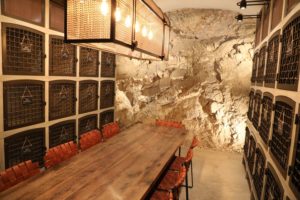
 The 2022 Bergman Estate Proprietary Red Blend is 67% Cabernet Sauvignon, 14% Cabernet Franc, 12% Petit Verdot and 7% Merlot. This wine spent 21 months in 100% new French oak barrels. It is deep ruby and opaque with purplish tinges on the rim; the layered aromatics showcase darker fruits including blackberry, boysenberry, dark plum, with a light kiss of baking spices including cocoa powder and cardamom. This wine is remarkably well balanced right out of the gate; for reference we tasted this two years post vintage. The palate offers flavors of red cherry, blueberry, plum, blackberry and dark raspberry. The tannins sports a lightly gravelly texture and linger with a note of dust and dried tobacco leaf. Finishes red fruited finish. Showcases a balanced acidity. This is an easy drinking bottling right out of the gate, perhaps representative of the overall vintage in Napa Valley.
The 2022 Bergman Estate Proprietary Red Blend is 67% Cabernet Sauvignon, 14% Cabernet Franc, 12% Petit Verdot and 7% Merlot. This wine spent 21 months in 100% new French oak barrels. It is deep ruby and opaque with purplish tinges on the rim; the layered aromatics showcase darker fruits including blackberry, boysenberry, dark plum, with a light kiss of baking spices including cocoa powder and cardamom. This wine is remarkably well balanced right out of the gate; for reference we tasted this two years post vintage. The palate offers flavors of red cherry, blueberry, plum, blackberry and dark raspberry. The tannins sports a lightly gravelly texture and linger with a note of dust and dried tobacco leaf. Finishes red fruited finish. Showcases a balanced acidity. This is an easy drinking bottling right out of the gate, perhaps representative of the overall vintage in Napa Valley.
Those who were in Napa Valley during Labor Day weekend of 2022 have heat seared into their memories; this wasn’t a normal late season heat spell, it was sustained extreme heat with temperatures measured at Bergman Estate, topping out at 122 degrees and lasting for 6 days. Pam recalls Nigel called and informed her a major heat spike was forecasted; instead of harvesting 10+ sperate picks they picked only three times this year in a much abbreviated time frame. And during this heat, temperatures remained remarkably warm at night, not dropping below the upper 60s on their property and remaining in the 80s at upper elevations in other parts of the valley.
The 2021 Bergman Estate Proprietary Red Wine is 70% Cabernet Sauvignon, 18% Cabernet Franc 6% Petit Verdot and 6% Merlot. This is the first vintage moving forward that show the full varietal expression of the vineyard. This wine is deep ruby and opaque; its layered aromatics focus on fruit rather than oak, perhaps somewhat surprising considering this bottling spent the most time in oak of any of their wines. It was aged for 31 months in 95% new French oak barrels and 5% neutral. The reason for the additional time in oak was that the tannins needed more time to resolve, particular the Cabernet Franc. And six blending sessions were made with winemaker Nigel Kinsman on this wine rather than the normal two or three. The bouquet offers scents of dark raspberry, red plum, dark cherry, mocha and a floral note including lilac and violets. The intensely flavored palate reveals darker fruit notes of blackberry, plum, black licorice, black cherry and a hint of milk chocolate with a lingering note of toasted cedar. The gravelly, pixelated and grainy tannins are still highly youthful at this age, 3 years post vintage at the time of our tasting and persist in tandem with the fruit with neither one dropping off before the other on the extended finish. This wine has loads of life ahead of it with the proper aging. This is a fine example from a standout vintage in Napa Valley.
Pam calls the 2020 harvest, the miracle pick. The grapes were harvested the morning of Sunday September 27th, the day the Glass Fire started. We remember arriving back from French Polynesia that afternoon and immediately racing over to Calistoga via Healdsburg, using a couple of vineyard alleyways in the far northern part of the valley to bypass an already setup check point. We stayed with friends in Calistoga (they did not evacuate) and assisted with water delivery efforts that entire week.
This wasn’t necessarily an ‘oh shxx’ pick as the pick had already been scheduled for that coming week. Pam was in Los Angeles when her son called her and mentioned a fire was burning in St. Helena. So she immediately called up Abreu’s crew who were harvesting at another nearby site. They quickly finished and raced up to Bergman Estate; 21 workers arrived at the property soon after Pam’s call and harvested 9 tons of grapes in three hours. By this time the roads were already closed up valley, but their crew was able to talk their way though one of the checkpoints. Mark Aubert of Aubert Winery had already finished his Chardonnay and Pinot Noir harvesting for the season but graciously offered the Bergman’s to house their grapes in his cold storage room until they determined their next course of action. Wheeler Farms had backup power supply; leaving the closed part of the valley during this week was much easier than trying to get in (especially before ag passes were issued). The grapes were hauled down to Wheeler Farms (which was outside of the path of the fire), where they were soon fermented.
The 2020 Bergman Estate Proprietary Red Wine is 95% Cabernet Sauvignon with 5% Merlot (from the 2021 vintage). This wine spent 47 days on the skins and was aged in 100% new French oak barrels for 22 months. The focus here is on the fruit; the bouquet is deep ruby and opaque with an amaranthine rim; the bouquet is a beautiful expression of dark raspberry, red plum, cherry with the oak a very subtle influence. And the palate sports flavors of blackberry, cherry, dark plum and blueberry. This wine features a dense and gravelly texture, but with well-rounded and resolved tannins. Their feel lingers with a persistent dusty and chalky character. For collectors who discount red wines bottled from this vintage from Napa Valley, it would be well worth your time to seek out this bottling. This is one of the finer expressions from one of the most challenging vintages in Napa Valley in recent memory. This wine shows very well in its youth.
The 2019 Bergman Estate Proprietary Red Blend is 78% Cabernet Sauvignon and 22% Cabernet Franc and was aged 20 months in 100% new French oak barrels. This wine is deep ruby and nearly opaque with an amaranthine rim. The bouquet is initially sweetly fruited including of blackberry, dark plum, cherry and boysenberry. In terms of aromatics, this vintage as compared to the others is more restrained and delicate. This is one of those coveted mountain sites in Napa Valley which delivers both a simultaneous freshness but also a ripeness. This is a serious wine which needs time to evolve in the glass. Additional scents show including of blueberry, lavender blossom, violets and a hint of crushed pink peppercorn. The focus of the bouquet is clearly on the fruit. Fresh and invigorating across the palate, this wine offers flavors of dark plum, blackberry and dark cherry with a lingering note of dried tobacco leaf, toasted oak and bakers chocolate. In this particular vintage, one can really feel the density and firm textural grip of the broadly spread tannins; they persist with a chewy character and a very long lasting dusty/chalky grip which outpaces the fruit on the finish. This wine lingers juicy and mouth watering with a drying and persistent character.
The 2018 Bergman Estate Proprietary Red Wine is 85% Cabernet Sauvignon, 14% Cabernet Franc and 1% Petit Verdot (these latter two varieties were co-fermented). It spent 35 days on skins and after it was pressed off, was aged for 20 months in 100% new French oak barrels. This wine is deep ruby and opaque with purplish tinges on the rim. The elegant bouquet needs time to fully evolve; it smells fresh and youthful with aromas of dark raspberry, red plum, milk chocolate, mocha and vanilla. The barrel influence becomes a bit more pronounced as this wine opens in the glass. The balanced, juicy and mouthwatering palate is more red-fruited than dark and offers flavors of dark raspberry, cherry, currant and lingers with a note of dried tobacco leaf. This wine offers a pleasing tension; the broad based tannins are lightly grainy with a persistent dusty character which outpaces the fruit on the finish. Fresh and youthful 6 years post vintage at the time of our tasting.
Decanting is an important part of presenting the Bergman wines and they spent efforts on a regular basis determining how long and how many decants best show their wines. Suggested decant times are listed on their website for any of their released wines.
Graphic artist, Chuck House who is responsible for the design of some of Napa Valley’s most iconic brands created the Bergman Family Vineyards label. House, along with Jeffrey Caldewey were the co-founders of Icon Design Group in 1985. Their first wine label design was for Frog’s Leap Winery. And artist Mike Gray created the pencil sketch illustration used for the back label on all their wines. Gray has also created artwork for other Napa Valley wineries including Darioush, Hyde, Lail, Mira and Morlet.
—
The wines are released when the family and their winemaking team feel they are ready. They are primarily available through a wait list on a first come first serve basis. For more information or to signup for their wait list, visit: www.bergmanestate.com







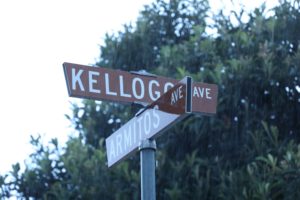
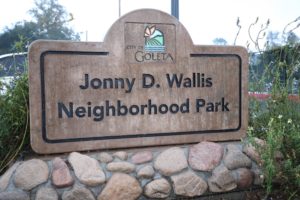





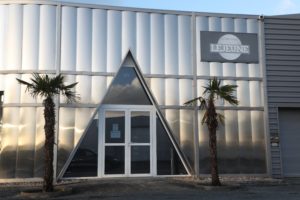
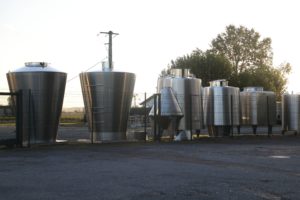










Leave a Reply